Summer Adventures: Roe and Fallow deer
My favourite time for Roe deer is early summer. Meadows are vibrant and rich in wild flowers. The deer look great in their summer coats. Roe deer sites see a dramatic increase in numbers, as sexually mature adults seek a mate. I counted four bucks and three does at my site on the Sussex/Surrey border. Fallow deer also look very attractive in their summer coats. Most of the Fallow on the private country estate I visit are tan brown and have white spots. They spend the daytime in the woods and come out to graze at around 8pm in a large field. The grass is unbelievably dense and lush, reaching two feet in height. When the deer are sitting down, only their ears are visible. Pollen blows off the meadow like a cloud of smoke. Fortunately, my hay fever is quite mild this year!
June 2016 got off to a ghastly start, with an area of low pressure bringing strong, cold northerly winds and overcast skies. The second photo was taken in temperatures of 10°C. Roe deer give birth in early June and a rise in temperatures is essential to ensure their survival. The second week saw much higher temperatures and an inevitable period of thundery showers. Mid June saw unsettled weather taking hold again until the end of the month. Nearly every day featured at least one of the following: thunderstorms; torrential rain; fog; overcast skies; below average temperatures or strong winds.
Ongoing train cancellations left me marooned at railway stations on every field trip. Flooding at Wandsworth Common on 23rd June caused serious disruption across the south east. When I arrived at the station, there were no trains at all to Brighton. I was facing a long night ahead before the next service at 5.30am, but luckily I caught a midnight train up to Gatwick Airport and waited there for one of few available services back down to Brighton. The only good news was the steadily growing pile of compensatory Rail Travel Vouchers on my table and they were put to good use on more deer stalking trips.
I prefer to photograph deer in bright, but sunless weather or in the last hour of the day, as the softer light brings out the delicate colours and textures in their coats. Even at 7pm, the sun creates harsh shadows, which can ruin otherwise good images. I have never sought to photograph deer in early morning mist or in silhouette — some people will only photograph deer under these narrow conditions, but I'd rather see the full beauty of wild deer in plain sight.
Many photographers have gone down the route of deer parks, which provide abundant opportunities to obtain misty, early morning shots of tame animals capable of being hand fed. I relish a challenge and deer parks would not be as rewarding to me as stalking elusive wild animals capable of evading the Eurasian Lynx. A second issue is the technical quality of simulated wildlife photography is so high, that it has raised the benchmark of acceptability. Genuine wildlife photographers cannot compete, as everyone now demands better and better shots based on the unnaturally high standards they've seen before. From my years of work, I can say that there is so much more to wildlife photography than photographic skill. The holistic experience of being alone in the forest and accepting uncertainty feels much more authentic than the idea of turning up at Richmond Park and taking bags of photos without either the deer or photographer breaking sweat.
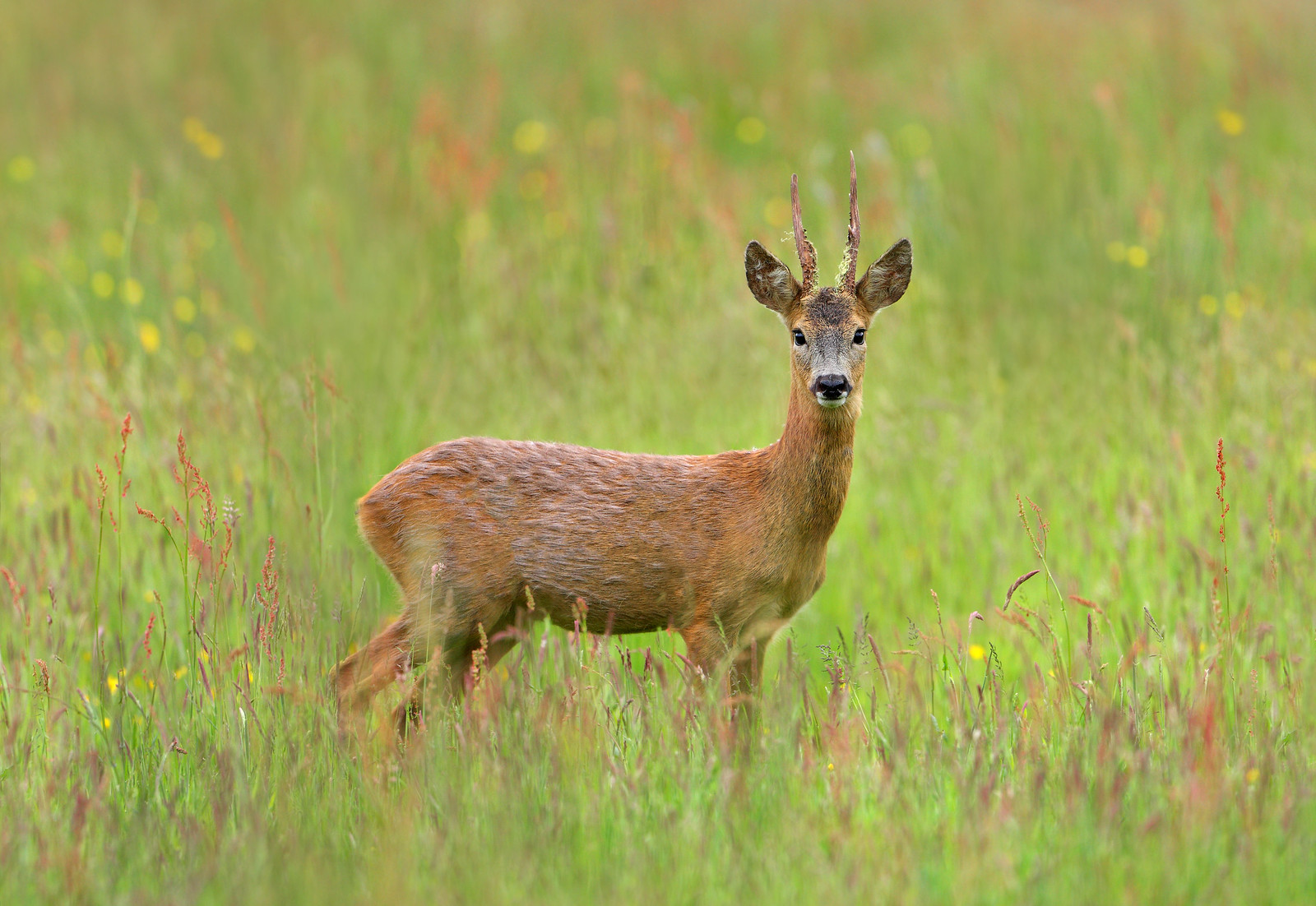
June 2016 got off to a ghastly start, with an area of low pressure bringing strong, cold northerly winds and overcast skies. The second photo was taken in temperatures of 10°C. Roe deer give birth in early June and a rise in temperatures is essential to ensure their survival. The second week saw much higher temperatures and an inevitable period of thundery showers. Mid June saw unsettled weather taking hold again until the end of the month. Nearly every day featured at least one of the following: thunderstorms; torrential rain; fog; overcast skies; below average temperatures or strong winds.
Ongoing train cancellations left me marooned at railway stations on every field trip. Flooding at Wandsworth Common on 23rd June caused serious disruption across the south east. When I arrived at the station, there were no trains at all to Brighton. I was facing a long night ahead before the next service at 5.30am, but luckily I caught a midnight train up to Gatwick Airport and waited there for one of few available services back down to Brighton. The only good news was the steadily growing pile of compensatory Rail Travel Vouchers on my table and they were put to good use on more deer stalking trips.
I prefer to photograph deer in bright, but sunless weather or in the last hour of the day, as the softer light brings out the delicate colours and textures in their coats. Even at 7pm, the sun creates harsh shadows, which can ruin otherwise good images. I have never sought to photograph deer in early morning mist or in silhouette — some people will only photograph deer under these narrow conditions, but I'd rather see the full beauty of wild deer in plain sight.
Many photographers have gone down the route of deer parks, which provide abundant opportunities to obtain misty, early morning shots of tame animals capable of being hand fed. I relish a challenge and deer parks would not be as rewarding to me as stalking elusive wild animals capable of evading the Eurasian Lynx. A second issue is the technical quality of simulated wildlife photography is so high, that it has raised the benchmark of acceptability. Genuine wildlife photographers cannot compete, as everyone now demands better and better shots based on the unnaturally high standards they've seen before. From my years of work, I can say that there is so much more to wildlife photography than photographic skill. The holistic experience of being alone in the forest and accepting uncertainty feels much more authentic than the idea of turning up at Richmond Park and taking bags of photos without either the deer or photographer breaking sweat.

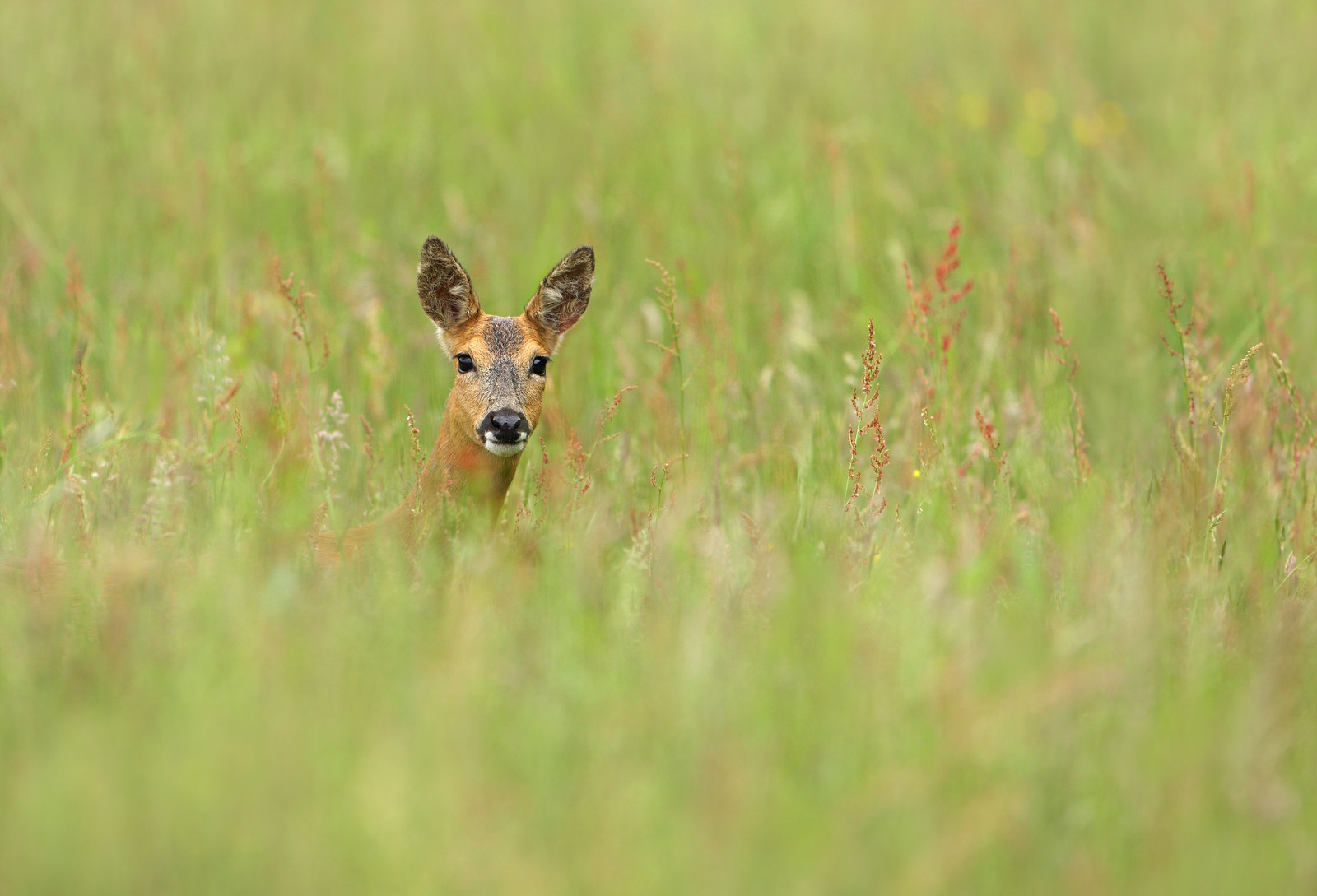
I've been observing this doe for several years now (see above and below). She is
an older doe. The tell-tale signs of her age are in the coat, as older
deer tend to shed their winter coats later. I've met this doe in previous years and find that if seen, she loses interest and relaxes
enough to continue feeding, as long as I hold back for long enough to
show that I'm not likely to be a threat.
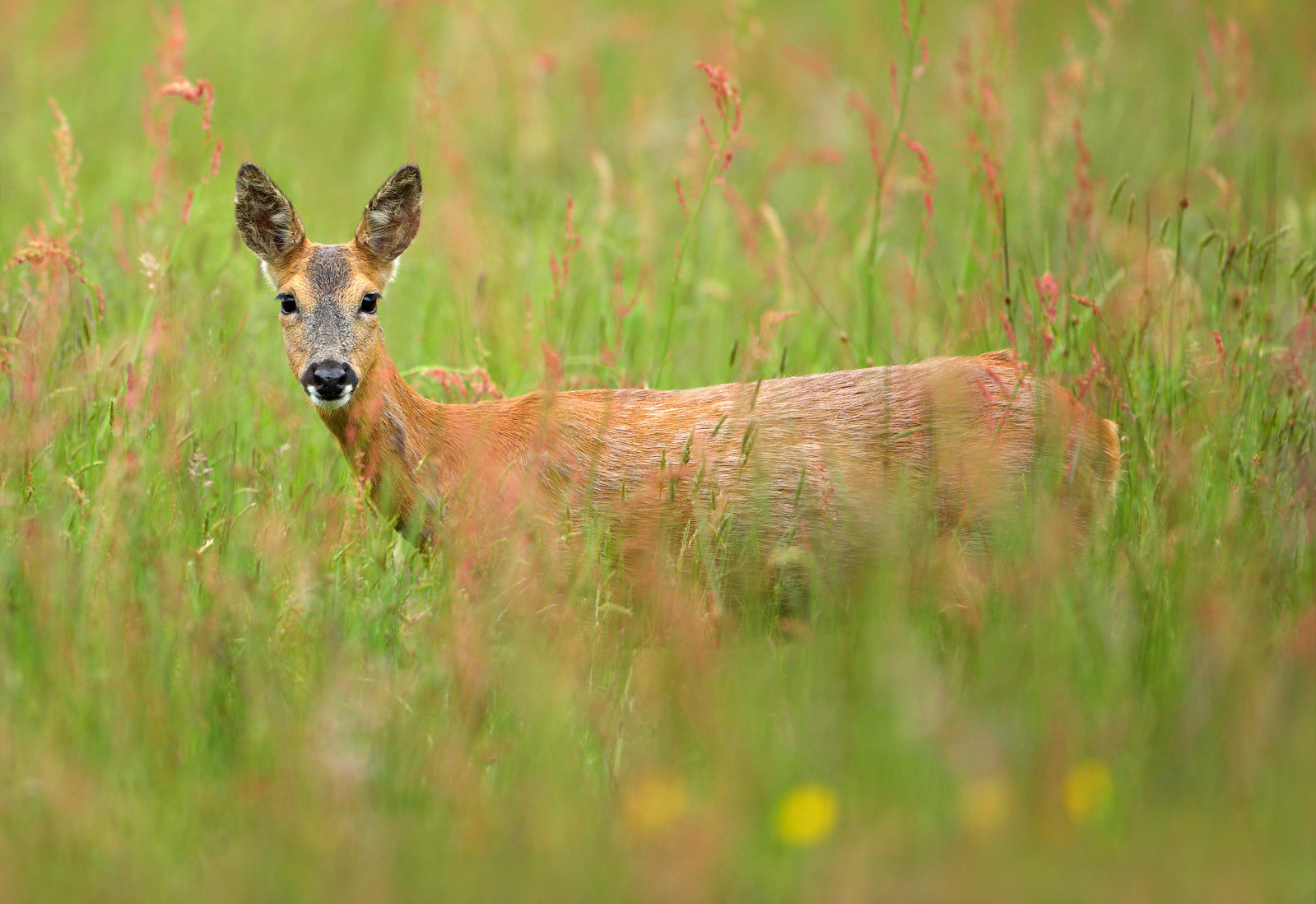
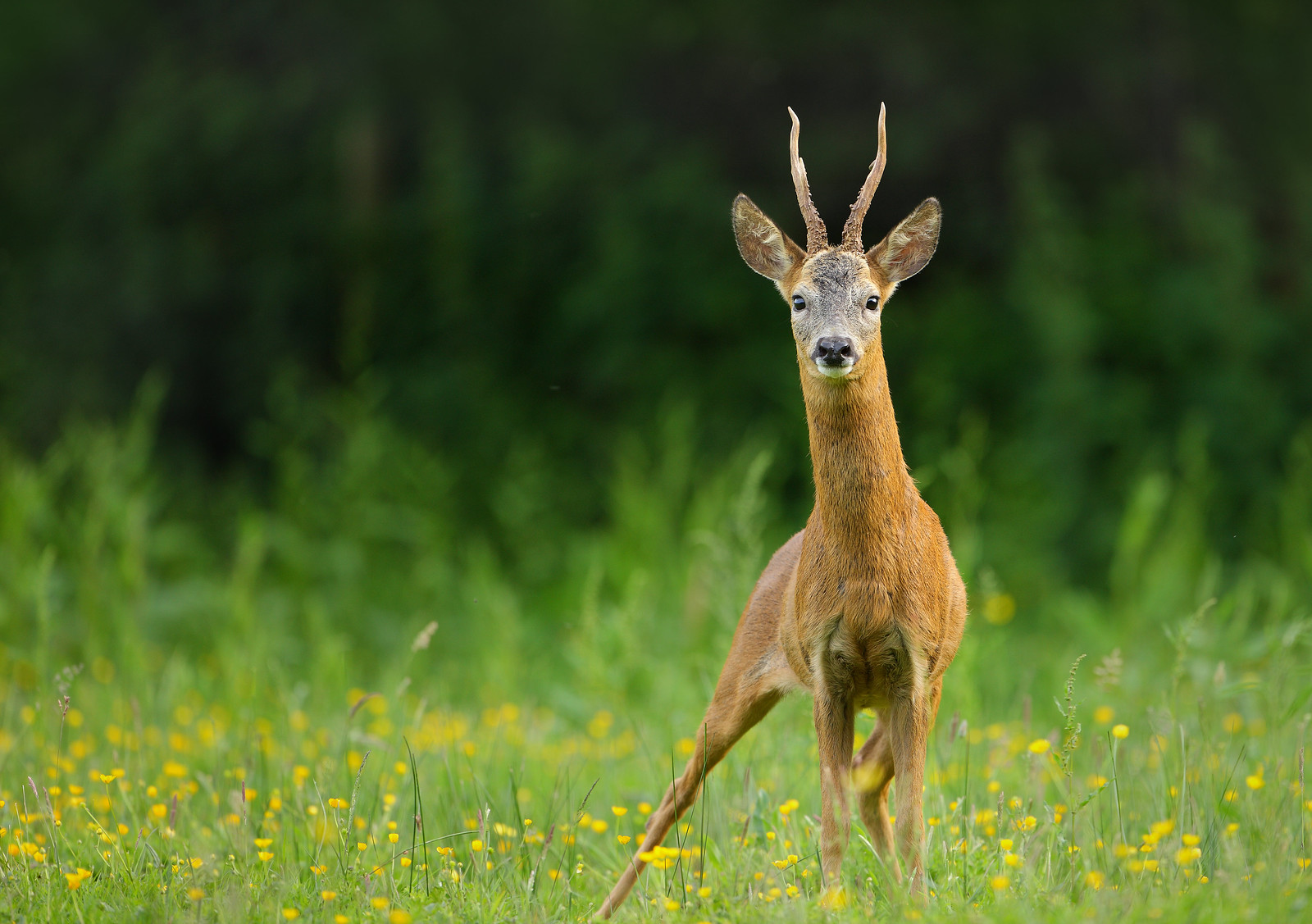
I hid myself among some trees after spotting two bucks locking antlers over a female. 50 metres is usually enough distance to observe Roe without causing disturbance, but unfortunately, the confrontation led to one deer running straight into my hiding place and the other passed me by. As you can see, he looks a bit taken aback! He was being chased too (see image below). I felt sorry about the incident, but we saw each other again a few hours later and he showed no signs of apprehension as I stood nearby. Roe at this site will remain in situ provided I respect their space, don't suddenly appear out of nowhere and hold back for long enough for the deer to decide that I'm not likely to be a threat.
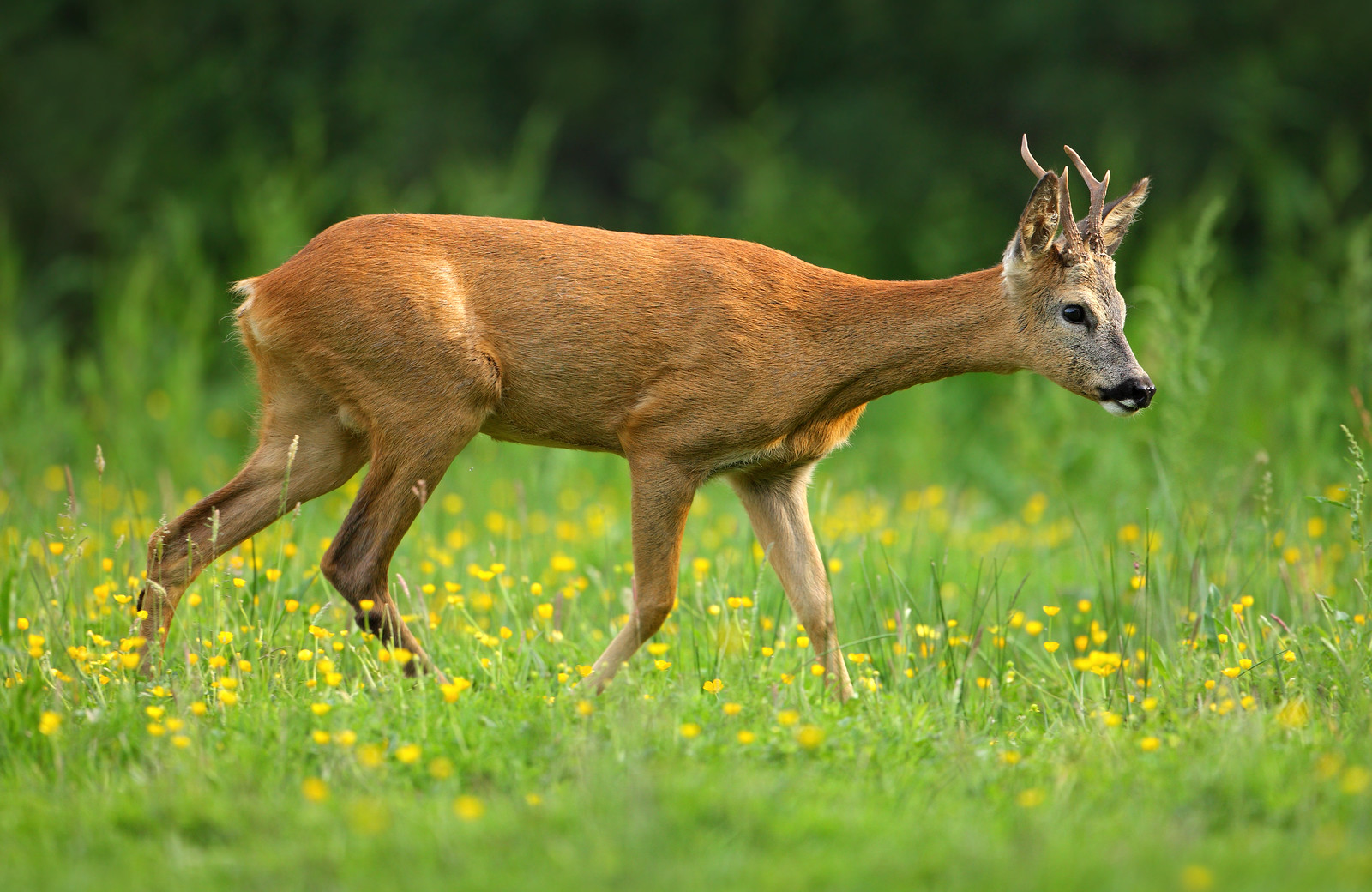
While I prefer to observe Roe deer without being seen, this is not always possible. Some Roe at my site on the Sussex/Surrey border don't mind being observed, as long as I keep my distance and refrain from any behaviour that could be seen as threatening. Roe prefer not to waste energy running away if they don't have to. When in the forest, I sometimes encounter Roe and Fallow deer unexpectedly along forest glades and there is little I can do to prevent this from happening (apart from not visiting the forest at all!). Deer are going to encounter people who are noisier than I am at some point anyway, so my approach is about refraining from threatening behaviour and minimising unintentional disturbance, rather than eliminating it.


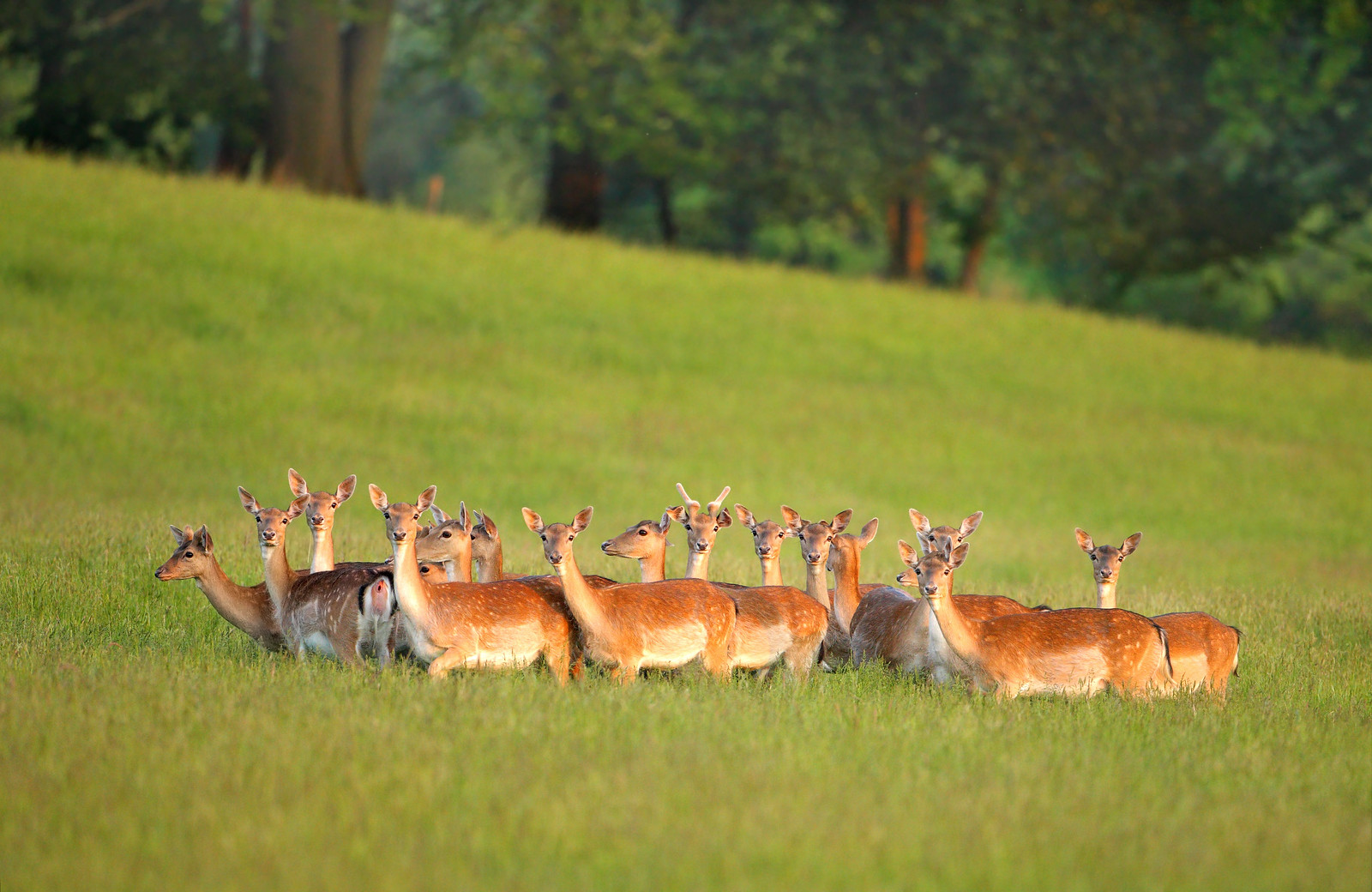
My other deer site is a forest in the High Weald AONB. Adjacent is a country estate and mansion, owned by people I've known since childhood. The land was formerly used for game. Decaying high seats are present throughout, but the new owners have abolished shooting rights. The only shooting now is done via a Canon L series 500mm lens.
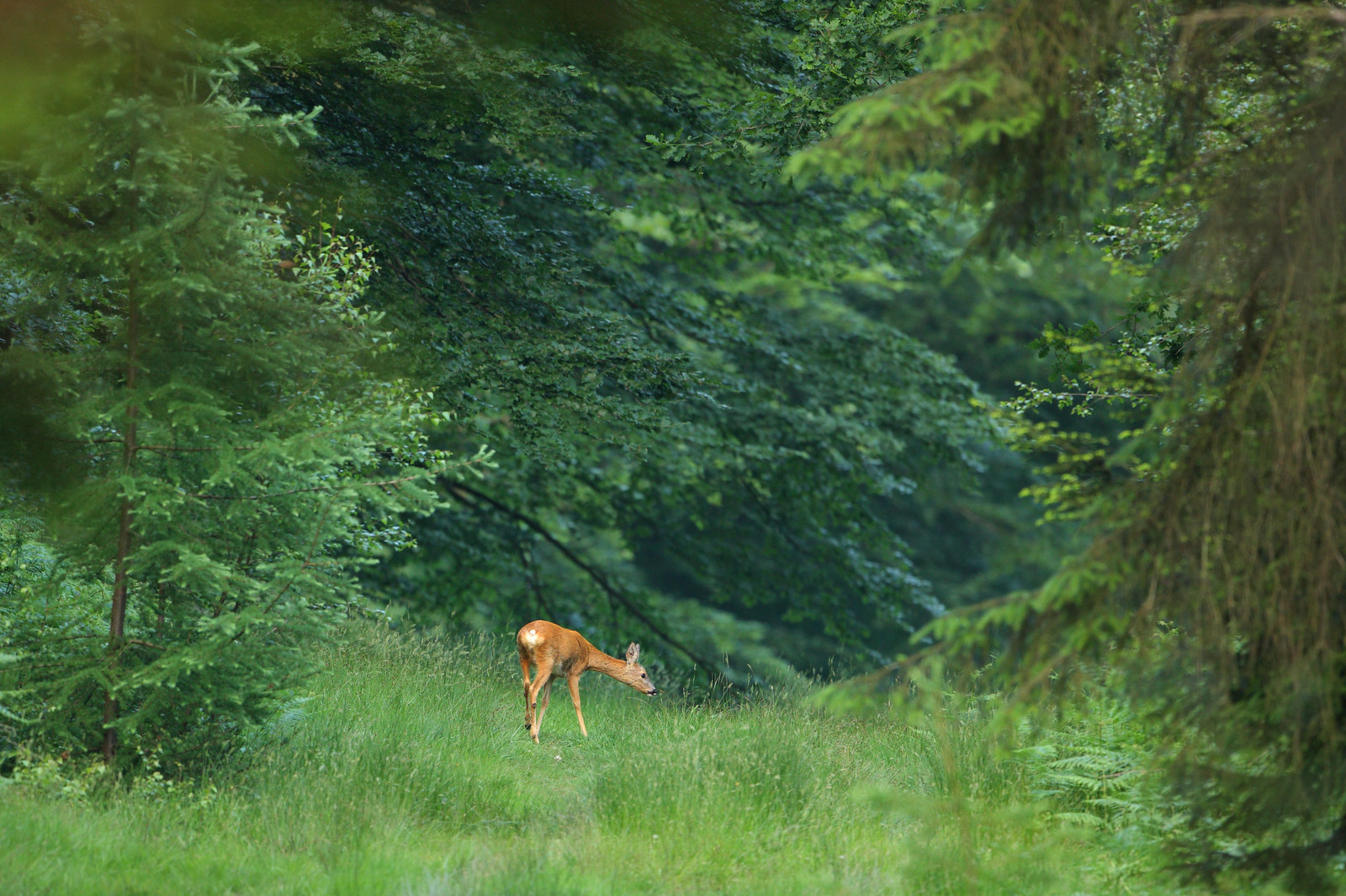
I was delighted to spot this pristine looking young doe making her way along a forest glade (see next photo for the same glade in mist). The compressed perspective embodied my sense of being an eavesdropper on a private event. Random, anonymous encounters like this make being a wildlife photographer all the more worthwhile.
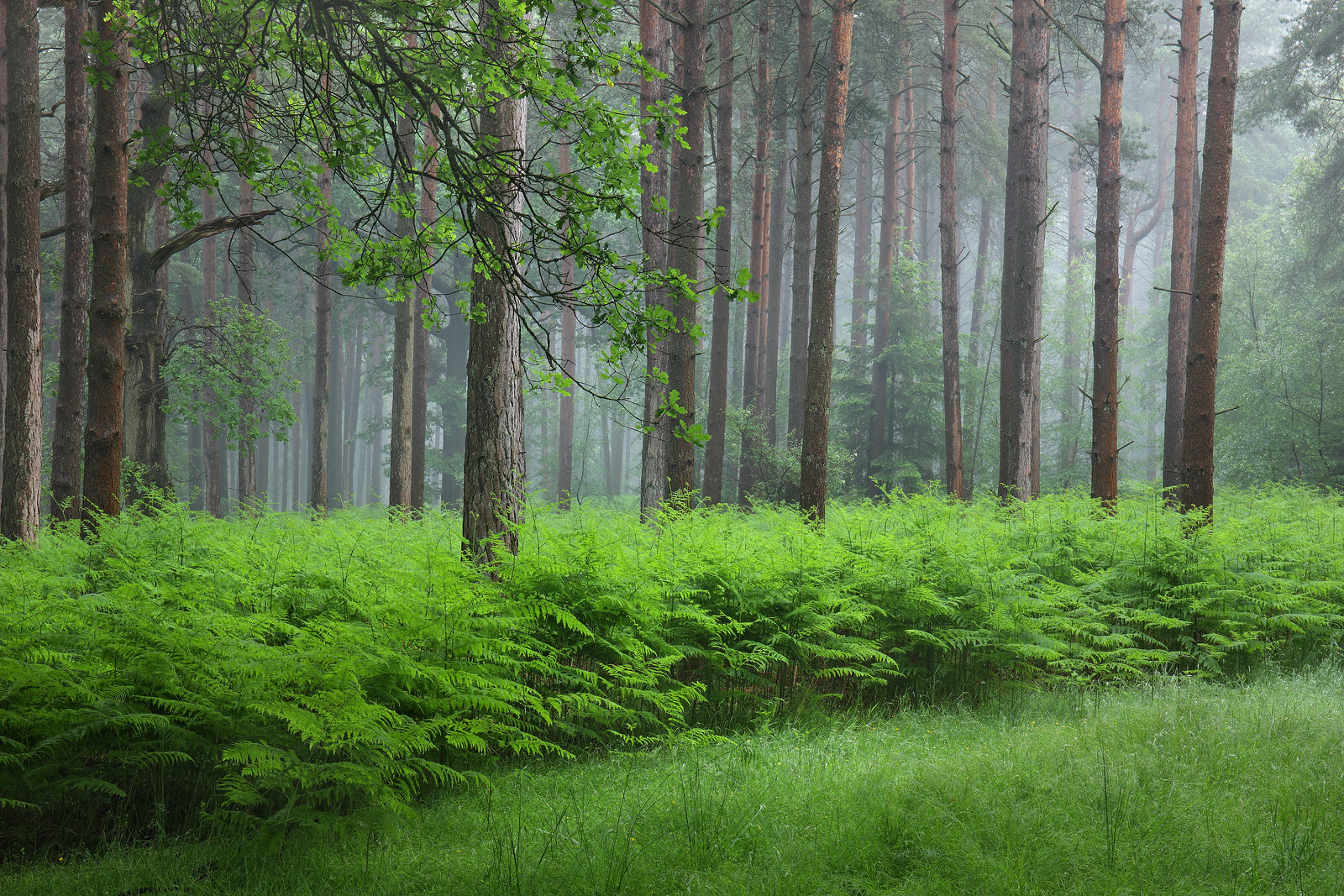
This woodland glade stretches for 700 metres through the forest. I took this shot late into a warm and muggy day, just as a bank of mist rolled up the hill. In August 2014, I witnessed a Fallow confrontation here. The bucks were so absorbed in the fight, that they failed to notice me. One buck got the upper hand and chased his opponent. I've never seen a wild Fallow deer leap through the air less than 5 metres in front of me and don't expect to live long enough for it to happen again. Unfortunately, much of the action took place in the thick ferns, so I didn't have the chance to photograph any of it.

This woodland glade stretches for 700 metres through the forest. I took this shot late into a warm and muggy day, just as a bank of mist rolled up the hill. In August 2014, I witnessed a Fallow confrontation here. The bucks were so absorbed in the fight, that they failed to notice me. One buck got the upper hand and chased his opponent. I've never seen a wild Fallow deer leap through the air less than 5 metres in front of me and don't expect to live long enough for it to happen again. Unfortunately, much of the action took place in the thick ferns, so I didn't have the chance to photograph any of it.
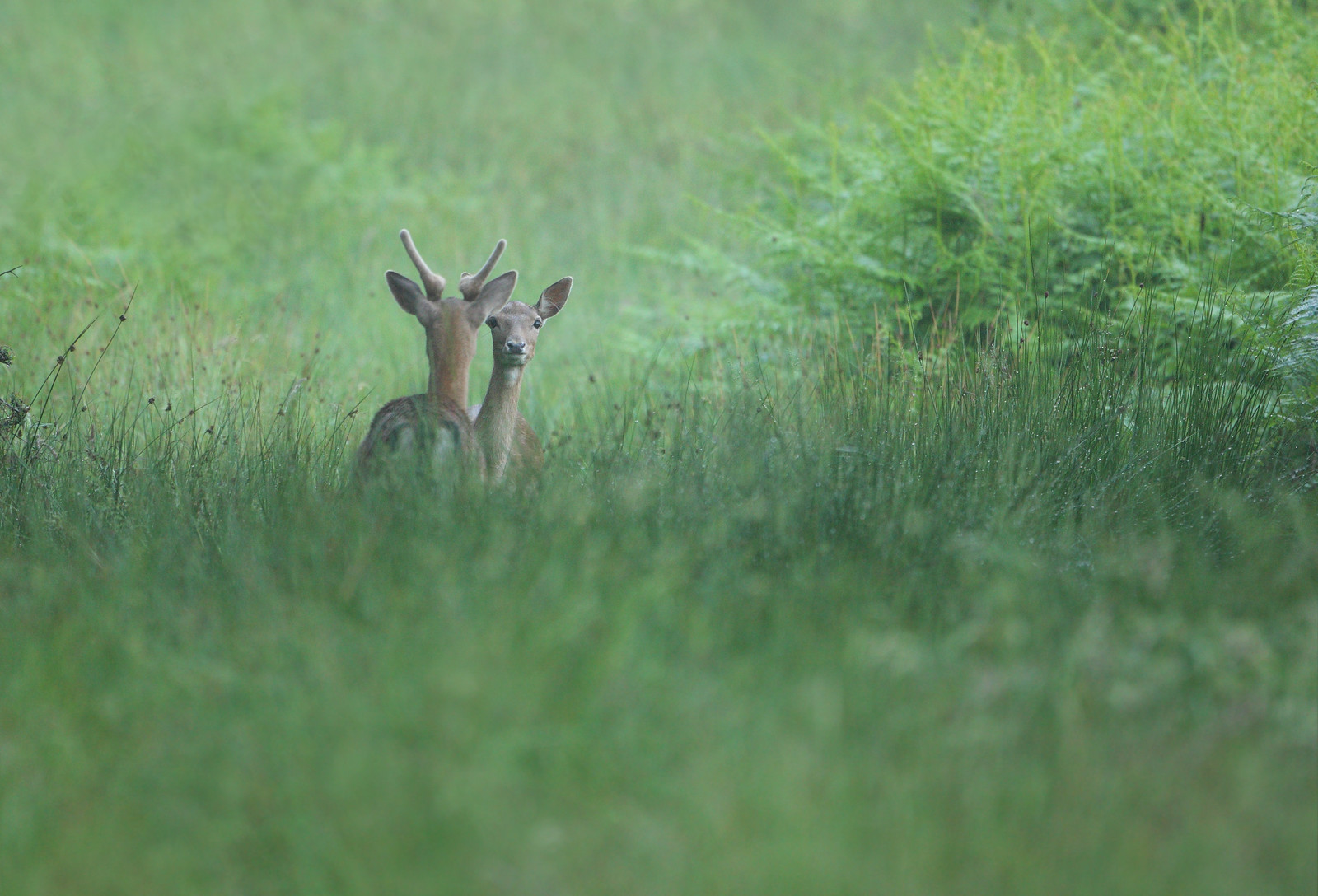
Torrential rain and thunderstorms impeded my deer stalking activities throughout the evening, although these Fallow deer came out to graze once the rain had stopped. My soaked trousers wicked rainwater straight into my boots and horseflies somehow still managed to bite. The sheer amount of evaporating water unexpectedly led to the formation of thick mist at 9pm. I've never known weather so uncharacteristic of June. The plane in the distance had just taken off from Gatwick Airport (see below).

This Fallow deer buck has a fine pair of antlers, but unfortunately, he is suffering from a limp. His rear left leg didn't look broken, but some ligament or muscle damage is likely. I'm hoping he'll make a full recovery. In a few years, he will become a thick set, mature buck, with extensive, full sized antlers.
I'm now taking a break from all photography until I feel like it again. Wildlife photography in particular is hard work and it's important to listen to myself when I feel I've had enough. The fact that I enjoy photography doesn't mean I have to do it all the time. Meanwhile, I hope you've enjoyed my deer photos and look out for another post soon on butterflies.
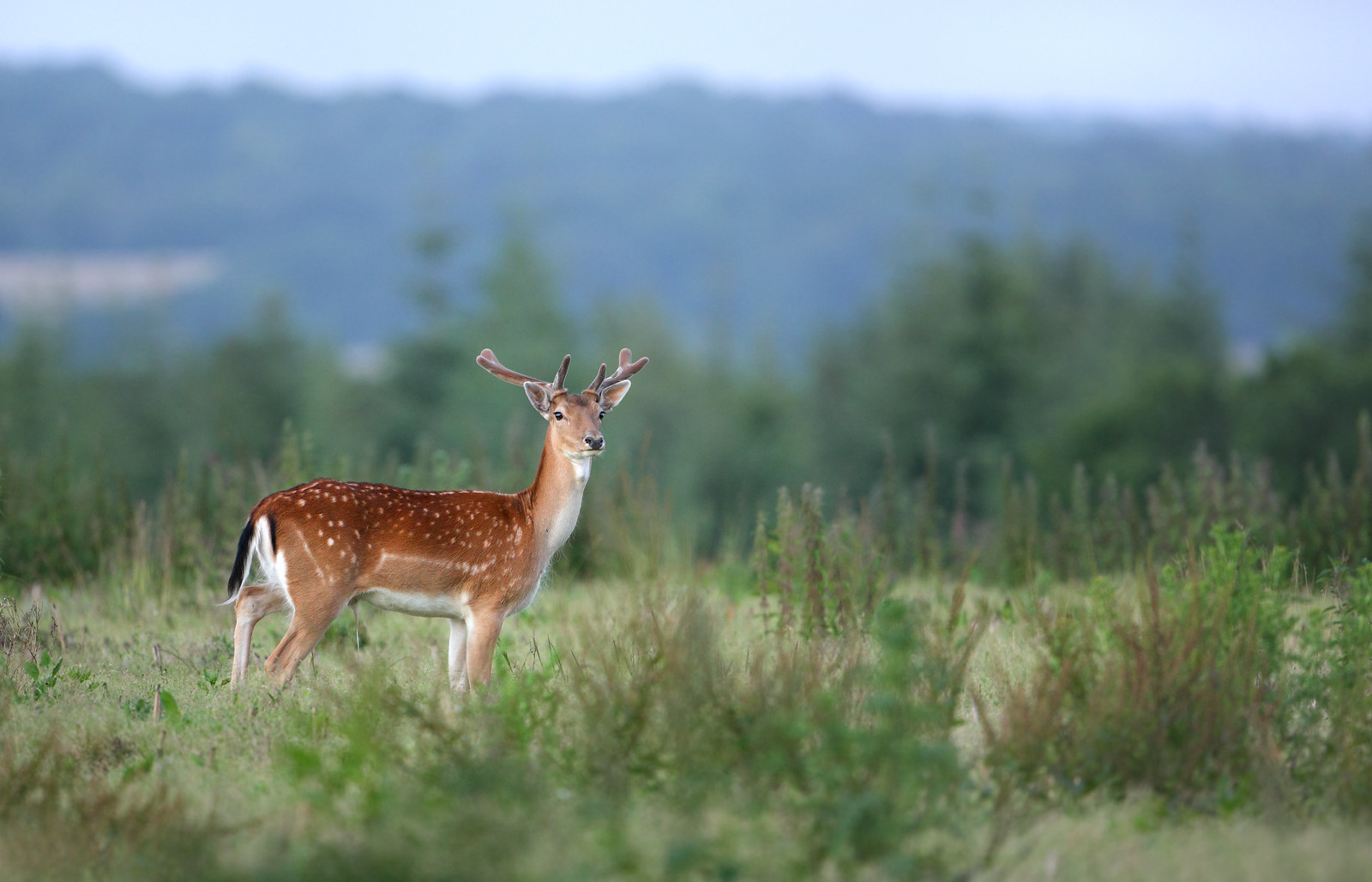
Comments